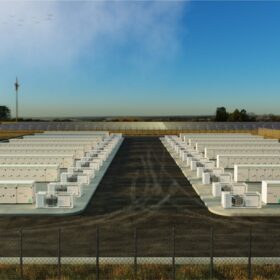By Mike Mendelsohn and John Harper
The corporate sector has made some extraordinary clean energy announcements of late, such as meeting 100% renewable energy by Fifth Third Bank, Google, and Apple, and many others committing to similar goals. Corporates now are beginning to look beyond their own direct energy consumption to help their suppliers, service providers, clients, and employees reach comparable clean energy use goals.
A critical third leg to corporate sustainability will be in providing the capital necessary to transform our energy economy. Undertaking tax equity (TE) investments is essential to monetize the 30% Investment Tax Credit (ITC) and accelerated depreciation tax benefits generated by solar power projects.
However, other than a few notable exceptions – Google, GAF and Patagonia among them – most corporates have lagged well behind banks and insurance companies as the source of this key component of the solar project “capital stack”. That’s due to an array of reasons.
Non-financial corporates generally consider solar investments outside their core competency and save excess capital for internal use or return it to shareholders. It’s also due in part to mistaken perceptions of the relative attractiveness of TE investments and the metrics used to evaluate the TE value proposition.
TE investments in well-structured solar projects can provide healthy and speedy returns. What is really needed, according to Jonathan Silver, Managing Director of Tax Equity Advisors, a firm that manages corporate investments in renewable TE structures, is better messaging on the risk and return profile and improved metrics to gauge the value proposition of the investment. “Companies need to look at the equivalent core revenue growth to create the same economic bump as TE.”
Interpretation: you have to sell a whole lot of product to provide a similar benefit to company shareholders.
Corporate TE investment in solar projects can manifest in three primary ways: 1) buying the solar equipment for direct ownership and producing power for internal use and avoidance of utility purchases; 2) investing alongside a solar developer in a separate company owning the solar asset that sells its power back to the corporate (either directly or indirectly via electricity hedges under a so-called “virtual power purchase agreement”) , and 3) investing alongside a solar developer in a project that sells all of the power to utilities or others without any linkage to the corporate’s own electricity usage.
All three strategies are valuable options to deploy excess cash to reduce federal tax obligations, provide high and relatively quick paybacks, and facilitate solar deployment to reduce greenhouse gas (GHG) emissions. However, the benefits and metrics may differ among the strategies.
The appropriate metric may also hinge on the style of investment. Return on Investment (ROI) is best applied when the corporate seeks a pure tax mitigation strategy with a quick return of benefits and minimal exposure to operational risk or long-term cash flows. In contrast, Internal Rate of Return (IRR) is the more appropriate yardstick for corporates expecting to own long-term project investments and their operating cash flows.
Solar TE is generally priced to produce an unlevered ROI of around 7-9% to a TE investor focused mostly on shorter-term tax benefits. Unlevered returns (on an IRR basis) are slightly higher for investments that also include longer-term operating risks and cash flows. Additional yield is typically expected for smaller projects not involving investment-grade off-takers or if senior debt is in the mix of capital provided at the project company.
Importantly, however, these metrics do not take into account the electricity cost savings, or that such savings increase over time as utility rates rise. For projects that are directly tied to the corporate’s electricity usage, those cash returns in the form of reduced operating expenses can be just as potent in increasing overall corporate return.
Further, an investment in a solar project provides a basket of investment return products (ITC, accelerated depreciation, and cash distributions), each with differing risk and return profiles. Assuming the corporate investor has the ability to project current year tax liability, recovery of the ITC is simply a reduction in taxes paid, primarily in the 12 months following the investment and potentially in the same quarter. Similarly, under the Tax Cuts and Jobs Act of 2017 passed last December, the TE investor can elect to expense the depreciation all in the first year of the project. The ITC and accelerated depreciation tax losses are almost (but not quite) independent of the actual operations and cash flow distributions from the solar project itself.
The front-loaded tax benefits received may be generally viewed as repayment of invested capital. The ongoing cash benefits – tied to project operation – can be viewed as return on the remaining invested capital. The cash payments can represent an ongoing annuity.
The returns to the tax investor, of course, are not without risk. The transaction should be structured such that the IRS does not disallow the tax benefits, also known as “recapture risk”, or reallocates them to the solar developer. The issue of timing includes two sub-questions – when did the tax investor buy into the project and did it hold the project through the full 5 year “clawback period”? IRS guidelines also require that the structure not simply be a tax shelter and there be real investment at risk.
Fortunately, there are well established guidelines regarding key attributes the IRS looks for such as qualifying expenses, partnership structure, and ownership timing. Further, the industry has developed an array of well-tested ownership structures, due diligence techniques, and contract provisions to mitigate these risks. Appraisal methodologies, for example, routinely identify qualifying expenses.
Structuring TE, while complex, is common and a wide array of investment partners and specialized accounting and legal resources are available to guide corporate investors new to the process. Additionally, insurance products and specific indemnities available from the developer can counter tax structuring risk. Corporates now can also partner up with an experienced tax equity investor such as US Bank to leverage their investment track record, developer relationships, documents, and due diligence resources.
During the operational period, ongoing risks include system production and off-taker credit performance although these are reasonably mitigated with proper due diligence and underwriting – both very common in today’s mature solar industry. The TE investor typically enjoys a senior position to project cash flows until pre-set return metrics are met.
One significant issue is referred to as “accounting geography” – the investment is sometimes recorded as an operating loss. There are varying accounting options for recording and recognizing TE investments. The accounting treatments are separate from the cash and tax impacts. Accordingly, corporates should discuss a prospective TE investment with their external accountants and agree on an accounting framework and how to describe the TE investments on their public disclosure reporting. Privately-held corporates and those not subject to the regulatory frameworks governing investments by financial services institutions have more flexibility as to how they book these transactions.
According to Steve Chun, CFO of DEPCOM Power, a large solar EPC/O&M company and itself a TE investor, the tax mitigation benefits improve a corporate’s GAAP effective tax rate (which has a direct boost to reported earnings and shareholder return) and the tax book (taxes actually paid).
The ITC is currently scheduled to decline in 2020, so now is a great opportunity to make use of this valuable tax mitigation strategy. Per current law, the ITC schedule is outlined as in the following:
|
Present to Dec. 31, 2019 |
To Dec 31, 2020 |
To Dec. 31, 2021 |
Starting Jan 1, 2022 (no termination date) |
|
30% |
26% |
22% |
10% |
We believe most corporates, particularly those that have committed to renewable energy, have a common credo: Do well while doing good. That is, make money for shareholders while also contributing to our social fabric. This is true not only for the Apples and Starbucks of the world, but also smaller and medium-sized corporates wanting to do their part to support their local communities. With TE investment in solar projects, corporates get to do both.
Mike Mendelsohn is the former Sr. Director of Project Finance & Capital Markets for SEIA. Mike is focused on solving for barriers at the nexus of solar, finance, and the real estate industries.
John Harper serves as managing director of Carreden Group, and has been with the company since 2014. Mr. Harper is primarily responsible for developing and maintaining relationships with developers, sponsors, investors and credit enhancers in renewable energy tax credit transactions. In addition, Mr. Harper provides consulting services through Birch Tree Capital, which he founded in 2004.
The views and opinions expressed in this article are the author’s own, and do not necessarily reflect those held by pv magazine.
This content is protected by copyright and may not be reused. If you want to cooperate with us and would like to reuse some of our content, please contact: editors@pv-magazine.com.








What do you think? Post a comment.